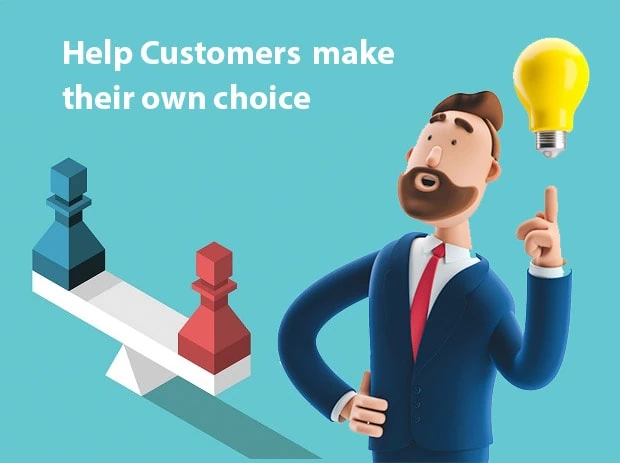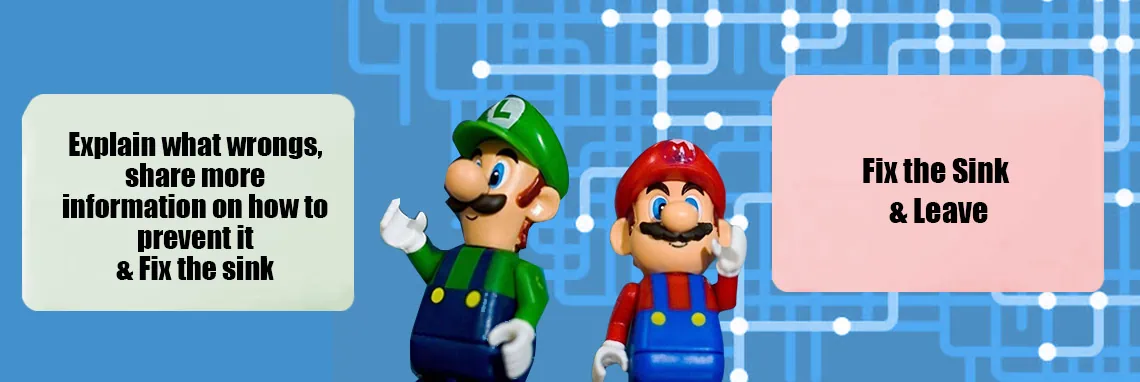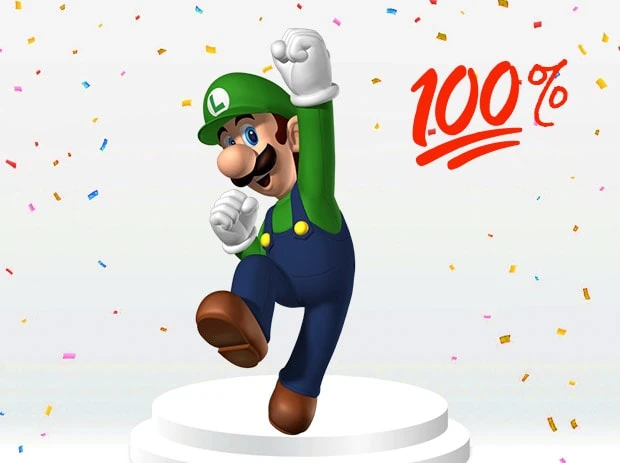Content Marketing for Beginners (2024): Easy & Simple Guide
Do you know about late-night talk shows? The one where the host interviews a guest and tells you a funny, relatable story. And then they show you a video clip on their most recent film or project. Or perhaps they also do a short and memorable comedic skit. All this entertainment just for free?
That’s content marketing.
Just like plugging the latest movies on a talk show (which are then be broadcasted on TV, YouTube, TikTok, and more), content marketing is all about creating and tailoring your content so that people can find you through search engines, social media platforms, and other communication channels.
With the rise of content marketing, Content Marketing Institute reports that 81% of marketers view content as a core business strategy.
It's no wonder many businesses are trying to create their own unique content. If you're also looking to dive into this form of marketing, this guide can help you learn something new and kickstart your very own content marketing campaign.


What is Content Marketing?
The simple explanation:
Content marketing is all about producing content that lets consumers make their own choices.
But what does that mean?
Here’s an example: you're a business selling a product online. But instead of just throwing paid ads at your customers that say “Buy It Now!” — content marketing aims to inform the customer first. It explains to the customer: “Why is your product better” and “What’s so good about your product”. Then, the customer gets to choose a product to buy.
So if your content marketing is done well, the customer should be choosing you.
The in-depth explanation:
Content marketing is a strategic marketing approach focused on repeated, consistent efforts to converse with customers.
It's about creating content that forms an instant connection with your customers and doesn't make them feel like they are being targeted.
In fact, 70% of internet users said they prefer to explore a brand via content, not ads.
It's similar to "indirect selling" or "long-term selling" because you're not explicitly selling anything. Instead, content marketing places a stronger emphasis on building awareness.
You're ultimately providing something of value to your target audience and positioning your brand in a desirable way through content marketing efforts.

Why is Content Marketing Effective?

What exactly makes content marketing effective? Well, here’s a simple analogy. Some call it the "plumber's theory”.
You have a broken sink and 2 plumbers, Mario and Luigi.
In the first scenario, Mario comes in, fixes the sink, collects his money, and leaves. The sink works, no problem.
In the second case, Luigi enters and explains what went wrong, how to correct it, and how to prevent it from breaking again. He tells you the name of the part you should buy and urges you to remember to drain the water from the pipes before attempting a DIY repair on your own.
Who would you hire the next time?
Luigi, 100% of the time.
Theoretically, Luigi did the same job with the same quality. However, he is perceived as more of an expert because he made an effort to explain himself. He also provided great customer service by educating the customer.
In summary, Luigi solved the initial problem you called him for, solved a problem you didn't know you had and provided valuable information. All of which benefits you, his target audience.
That's why content marketing works. It's a way to build trust and establish a relationship with potential customers while educating them about a problem they didn't know they had.

What are the Basics of a Successful Content Marketing Strategy?
1. Avoid Being
Pushy
According to Hubspot Research, online users dislike ads on their mobile phones almost 2 times as much as they do for tv ads.
Your target market is getting pickier, more distrustful, and less likely to respond to ads that sell them something unless it's a product they have shown initial interest in.
With traditional advertising, the message was straightforward: "Here’s a problem, and we have a solution".
Today, the marketing landscape has changed. You need to know how to define your target audience and create content that speaks directly to the consumer by aligning with their values, wants, and needs without being too pushy.
2. Create Valuable Content
Content marketing is about distributing valuable and relevant content to attract and retain a clearly defined audience — and, ultimately, to drive profitable customer action.
Some examples of online content marketing efforts include simply providing helpful content, sharing exclusive information for free, and telling your company's story and why you got into your business.
In practice, this usually entails creating and distributing content that meets the needs of your target audience by either informing, educating, or entertaining (often a combination of these three things). For instance, it would be better for a company to provide a guide that answers the query, "How do I replace a faucet?" rather than only having an e-commerce page that displays a list of faucets.
3. Understand Your Audience
Be where your audience is.
Your content should be a solution to your audience's problems rather than an advertisement for your goods and services. Ask yourself this: What information can you offer that would make their lives easier?
You should also find out the channels that your audience use. Do they rely on Google searches the most? If so, focusing on SEO is probably a good place for you to start. Is social media where they spend the majority of their time? If the answer is yes, it may be time to create social media-friendly articles to pique their curiosity.
What are the 4 Pillars of Content Marketing?
Learn more about each pillar by expanding on the accordion below.
If you want to build a successful content marketing strategy, SEO is often recommended and is probably the most important pillar of content marketing.
To rank higher on SERPs (search engine results pages), your website needs good SEO. This means that your website should be able to load pages quickly, have no broken links, and properly use alt tags. Your content should also contain useful website links and provide information on relevant topics and keywords based off the right search intent.
When SEO is done well, you will stand out in SERPs and generate more organic traffic. Check out more about why SEO is important for businesses and also learn more about our SEO services.
Neither readers nor search engines will be impressed by low-value content. Whatever topic you choose to create content for should be unique, well-written, and error-free.
Apart from these basic requirements, a content marketing team should thoroughly research their audience to understand their preferences, needs, and preferred platforms before coming up with content ideas.
Content marketers or writers must have a solid understanding of the topics before writing and publishing them. Internet users generally prefer content that answers questions beyond the surface to address any queries they have.
Learn more: SEO copywriting services
A content calendar is a written schedule of when and where you plan to publish upcoming content.
It helps you to keep your content marketing campaigns in check and ensures that content is organised, created, and published regularly without delays. They typically include upcoming blog posts, status updates, planned promotional events, and updates to existing content.
Every effective content calendar is driven by objectives and ensures that your content-related tasks are actually happening on schedule. In other words, it ensures that nothing falls between the cracks. They also make it much easier to collaborate and communicate with your team.
Get Help from: Content Marketing Agency
The fourth and last pillar of a successful content marketing strategy is looking back and reflecting on your work.
KPIs should be decided early on as they are the best indicators in deciding if the content created is successful. Some examples of KPIs can be content click-through rates (CTR), social media likes, and follower growth.
Content marketers should use the information gathered through analytics to decide if they hit their KPIs and refine their content marketing strategies accordingly.
In truth, content marketing success is never easy and has no finish line. It's a continuous cycle that should be changed to keep up with trends and incorporate new technologies to meet the demands of your audience.
You will be rewarded with more loyal customers and new clients when this is done consistently and properly.
What are Examples of Content Marketing?
6 Types of Content Marketing Examples
There are many different types of content marketing that businesses can use to reach and engage their target audience. Out of all these examples, written content, in our opinion, is excellent because it is the least expensive and can be repurposed in various content formats, including social media posts, newsletters, infographics, ebooks, and videos.
Ultimately, you should choose whatever best suits your product or service and what you feel the most confident in creating.
Blogs
Blog posts are the most popular way of doing content marketing. Most businesses start with informative blog posts optimised for organic search keywords.
For example, an airline company could create informative articles on cities they fly to so you're inspired to visit. A digital marketing company could create blogs with marketing lessons learned from Game of Thrones TV show.
White Papers
White papers are informational documents or reports promoting a product or service that is generally targeted at a B2B audience. These give high-level content away “for free” in exchange for an email address.
Videos (often YouTube)
Thanks to Facebook and smartphones, video content marketing is easier than ever and can be a great way to improve brand awareness.
For example, if you run a plant nursery, you could create tutorial videos on planting a garden or taking care of plants to sell more gardening products.
If you sell smartphones, you could film an unboxing or product review video, such as "iPhone 14 vs iPhone 14 Pro Max", which is trendy and is widely searched for.
Audio (podcasts, playlists)
Direct-to-consumer (DTC) companies often create playlists For example, Summersalt, a swimwear business, made a playlist that customers could listen to while lounging by the pool while wearing bikinis. Take a look at these branded podcasts for some inspiration as well.
Webinars
Online seminars have recently become a popular choice for businesses. It's because they allow you to offer your target audience value right away, and are usually free and easy to access. Leaders can also impart knowledge, experience, and advice through webinars.
This helps to foster a loyal community, which in turn, boosts sales. For instance, Notion, a company that provides project management and notetaking software for businesses, has webinars available for anyone to watch and learn about their software
Free tools
Free resources are always welcome. Tools such as interest calculators, a spreadsheet template to track your monthly budget, or something similar, are all great examples that can indirectly build brand awareness.
For example, Hubspot offers users a variety of online tools to assist them with inbound marketing, digital marketing, and blog post ideas. They built a platform that has become a valuable resource for content marketing teams worldwide.
What are the Benefits of Content Marketing?
What is Content Marketing Strategy?
What are the steps in a content marketing strategy?
Content marketing strategy often involves 4 main steps:
(1) Planning → (2) Creation → (3) Distribution → (4) Reflection
(1) Planning
(2) Creation
(3) Distribution
(4) Reflection
What is the Best Content Marketing Strategy?
Content is King
In 1996, Bill Gates coined the term "Content is King". He predicted that money will be made by content providers on the Internet, just like in broadcasting.
Today, this idea still holds and can be applied to content marketing and SEO.
After all, we cannot deny that the success of many modern businesses on the Internet is influenced by unique, high-quality, interesting, and relevant content, which makes having a great content marketing strategy all the more important.
Such a strategy involves integrated content marketing, which creates content in many forms and repurposes them to boost readership, customer trust and loyalty. This means that a content marketer has to work with numerous departments such as sales, social media marketing, product marketing, and customer support to get their material in front of their target audience.
With this immense potential, it’s no wonder this two-decade-old saying about content still remains true today.
Rule of Thumb
Spend 20% of your time creating content and 80% of your time promoting it. Just pumping out blog posts isn't going to do anything for you.
Content Marketing [Infographic]
Content marketing infographics are visual representations of information and data related to content marketing. Ultimately, any good content marketing strategy involves a healthy mix of SEO and content production. After all, there's no use in producing great content if no one ever sees it. That's where SEO comes in.
With SEO, you can ensure that your content is more likely to show up in search results. And since users tend to trust Google's results, this can be a great way to drive more traffic to your content.
Of course, SEO is only part of the equation. Your content also needs to be interesting and relevant if you want people to stick around. But by combining content marketing with SEO, you can give your content the best chance of success.
So kickstart your journey to great content marketing today. Check out our free infographic to help you out!

